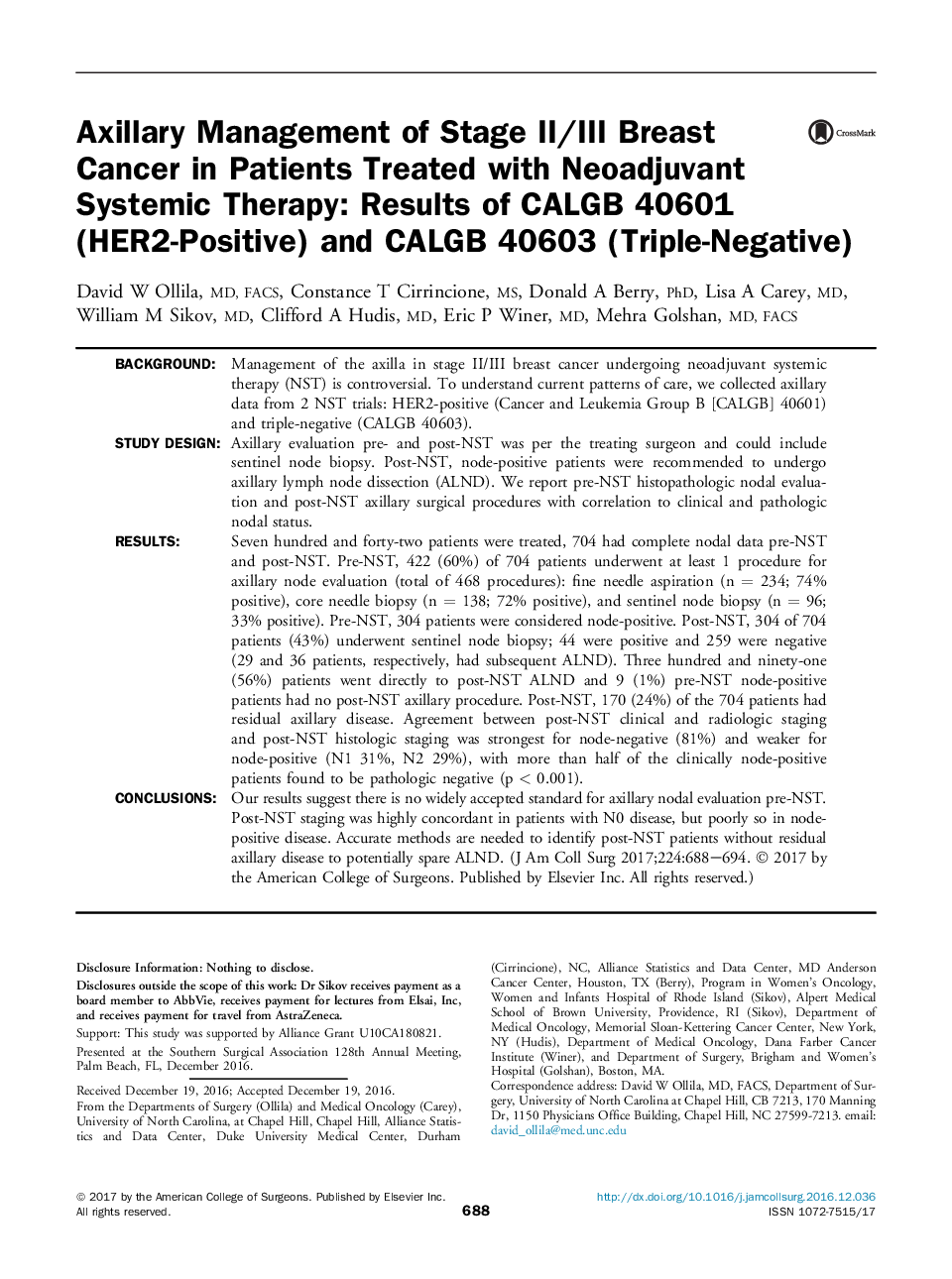| کد مقاله | کد نشریه | سال انتشار | مقاله انگلیسی | نسخه تمام متن |
|---|---|---|---|---|
| 5733117 | 1612193 | 2017 | 7 صفحه PDF | دانلود رایگان |

BackgroundManagement of the axilla in stage II/III breast cancer undergoing neoadjuvant systemic therapy (NST) is controversial. To understand current patterns of care, we collected axillary data from 2 NST trials: HER2-positive (Cancer and Leukemia Group B [CALGB] 40601) and triple-negative (CALGB 40603).Study DesignAxillary evaluation pre- and post-NST was per the treating surgeon and could include sentinel node biopsy. Post-NST, node-positive patients were recommended to undergo axillary lymph node dissection (ALND). We report pre-NST histopathologic nodal evaluation and post-NST axillary surgical procedures with correlation to clinical and pathologic nodal status.ResultsSeven hundred and forty-two patients were treated, 704 had complete nodal data pre-NST and post-NST. Pre-NST, 422 (60%) of 704 patients underwent at least 1 procedure for axillary node evaluation (total of 468 procedures): fine needle aspiration (n = 234; 74% positive), core needle biopsy (n = 138; 72% positive), and sentinel node biopsy (n = 96; 33% positive). Pre-NST, 304 patients were considered node-positive. Post-NST, 304 of 704 patients (43%) underwent sentinel node biopsy; 44 were positive and 259 were negative (29 and 36 patients, respectively, had subsequent ALND). Three hundred and ninety-one (56%) patients went directly to post-NST ALND and 9 (1%) pre-NST node-positive patients had no post-NST axillary procedure. Post-NST, 170 (24%) of the 704 patients had residual axillary disease. Agreement between post-NST clinical and radiologic staging and post-NST histologic staging was strongest for node-negative (81%) and weaker for node-positive (N1 31%, N2 29%), with more than half of the clinically node-positive patients found to be pathologic negative (p < 0.001).ConclusionsOur results suggest there is no widely accepted standard for axillary nodal evaluation pre-NST. Post-NST staging was highly concordant in patients with N0 disease, but poorly so in node-positive disease. Accurate methods are needed to identify post-NST patients without residual axillary disease to potentially spare ALND.
Journal: Journal of the American College of Surgeons - Volume 224, Issue 4, April 2017, Pages 688-694